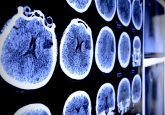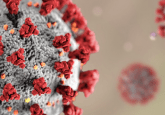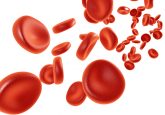Optimizing mechanical thrombectomy in acute ischemic stroke in response to COVID-19

In the last 20 years death rates from stroke have fallen as a result of improved therapies and faster access to treatment [1]. It is predicted that between 2017 and 2047, the number of people with stroke across Europe will increase by 27% to 2.58 million cases [2]. The combination of a decrease in deaths from stroke with an increase in the actual stroke events, means more people will be surviving with the sequalae of stroke. Indeed, it is predicted that there will be 2.5 million more stroke survivors in Europe in 2047 (12.11 million) compared with 2017 (9.53 million) [2].
Around 85% of strokes are ischemic, with a large proportion of those caused by large artery occlusion [3]. The time taken to seek care is a crucial factor and delays can have long-lasting consequences. A retrospective cohort study of 6756 individuals with large vessel occlusion in acute ischemic stroke (median pre-treatment National Institutes of Health Stroke Scale score of 17 [IQR, 12–22]) found that 27.4% (101/368) were free from disability (Modified Ranking Scale [mRS] 0–1) at discharge and 35.3% (130/368) were functionally independent (mRS 0–2) at discharge when treated with endovascular reperfusion therapy up to 2 hours after last known well time. That compared with 13.4% (235/1755) and 21.4% (376/1755) respectively of those treated 241 to 360 minutes after last known well time [4].
Morbidity and mortality from stroke have been further impacted by the COVID-19 pandemic, particularly in light of evidence of delays in the treatment of ischemic stroke. People’s fears regarding COVID-19 has been partly responsible for delays in patients seeking help for acute ischemic stroke. Anecdotally, doctors in some areas have reported a fall in the number of acute cardiovascular and cerebrovascular emergencies [5–7]. There have also been reports of significant reductions in the number of stroke patients accessing services compared with 2019 [8]. Data from 12 institutions in six US states show that the time between last known well time and presentation at a comprehensive stroke center increased by an average of 160 minutes from baseline (March 2019; 442 minutes) to the COVID period (March 2020; 603 minutes, p < 0.03). There was no significant difference in disease severity at baseline [9].
Evidence of a link between COVID-19 infection and stroke is increasing. Those hospitalized as a result of infection with the virus are at higher risk of ischemic stroke compared with patients with respiratory conditions. A retrospective case-controlled study conducted in six hospitals in New York (USA) found an independent significant association between acute ischemic stroke and COVID-19 infection (OR: 3.9; 95% CI, 1.7–8.9; p = 0.001). The average age for cases and controls was 65.5 ± 15.3 years and 68.8 ± 13.2 years, respectively. 46.3% of patients with acute ischemic stroke had a COVID-19 infection compared with 18.3% of controls (p = 0.001). Cases (n = 41) had vascular imaging-confirmed acute ischemic stroke and controls (n = 82) had no stroke, again confirmed by vascular imaging [10]. The risk of stroke associated with COVID-19 infection among younger patients may also be higher than among older patients. Indeed, some data suggest there is a 7.6-fold increase in the odds of stroke with COVID-19 compared with influenza [11].
Stroke in patients with COVID-19 infection may result from coagulopathy; endothelial cells damaged by SARS-CoV-2 activate inflammatory and thrombotic pathways. Thrombocytopenia with elevated D-dimer and C-reactive protein along with thrombocytopenia seen in patients with severe COVID-19 and stroke suggest an association of the virus with a microangiopathic mechanism. Atrial fibrillation or destabilized carotid plaque as a result of acute inflammation following acute infection may also be a factor in causing acute ischemic stroke [12].
In common with other areas of medicine, the COVID-19 pandemic has challenged medical teams caring for people with stroke. As a result, there have been numerous changes in the traditional clinical pathways and the way services are delivered in acute stroke. These include the introduction of ‘new ways’ of working during the ongoing pandemic with the introduction of a number of infection prevention and control measures like the use of personal protective equipment, virtual working and all the precautions in place to reduce the spread of infection. Rapid testing and rapid cleaning has allowed the treatment of COVID-19 and non-COVID-19 stroke patients in parallel with as little delay as possible [13]. The continual assessment of the available evidence/science and guidance from governments, professional bodies and associations, has been a challenge within itself.
As a result of the COVID-19 pandemic, health services are currently challenged by significant disruptions but also an increased number of patients waiting to treat. Due to patient anxiety about attending hospital and also the need to redeploy staff as a response to the COVID-19 pandemic, there has been an ever-increasing clinical backlog developing in all specialties. Subsequently, as the pandemic continues around the world, services like stroke are struggling in part due to the reduced clinical capacity. Potential strategies to help cope with increased numbers of patients could include optimization of mechanical thrombectomy procedure, maximize the likelihood of first-pass success and reducing the length of stay through early discharge where appropriate.
The greatest benefits from mechanical thrombectomy are observed when substantial and excellent reperfusion from the first pass is achieved. Avoiding repeated endothelial vessel injury, increased rate of complications and prolonged procedure time is essential [15]. In the Analysis of Revascularization in Ischemic Stroke With EmboTrap (ARISE II) study, near complete reperfusion – modified thrombolysis in cerebral infarction (mTICI) ≥ 2c – was achieved after first pass in 40.1% (91/227) of patients, and successful reperfusion (mTICI ≥ 2b) was achieved after first pass in 51.5% (117/227) of patients [14]. Overall, functional independence – defined as mRS 0–2 at 90 days – was achieved by 147 out of 217 participants (67.3%; 95% CI, 61%–73%) [14].
There are cost savings from the use of mechanical thrombectomy due to patients’ clinical improvement [16, 17]. Furthermore, a recent post hoc analysis demonstrated the economic impact of achieving complete or near complete reperfusion after first pass (first-pass effect, or FPE) compared with multiple passes – the first study to look at the economic implications of achieving this important procedural performance goal. This has led to reduced healthcare resource use and therefore lower annual care costs. The analysis compared costs in the FPE and non-FPE groups in the USA, France, Germany, Italy, Spain, Sweden and the UK at two time points – procedural/hospitalization related and annual care in the first year after stroke [18].
Conclusion
Mechanical thrombectomy has been proven to improve long-term outcomes compared with intravenous thrombolysis alone. The COVID-19 pandemic has challenged acute stroke clinical care teams. Subsequently, there have been numerous changes in the delivery of acute stroke therapies with in parallel the introduction of a number of infection prevention and control measures. Potential strategies to help manage these include the optimization of mechanical thrombectomy to maximize the likelihood of first-pass success and reducing length of stay through early discharge where appropriate. There are associated cost savings implications too with these strategies with reduced healthcare resource use and therefore lower annual care costs.
[1] Stroke Alliance for Europe. The Burden of Stroke in Europe.
https://strokeeurope.eu
[Accessed 9 February 2021].
[2] Wafa HA, Wolfe CDA, Emmett E et al. Burden of Stroke in Europe. Thirty-Year Projections of Incidence, Prevalence, Deaths, and Disability-Adjusted Life Years. Stroke 51, 2418–2427 (2020).
[3] NHS England. Clinical Commissioning Policy: Mechanical thrombectomy for acute ischemic stroke (all ages).
www.england.nhs.uk/midlands/wp-content/uploads/sites/46/2019/05/d04-mechanical-thrombectomy-for-acute-ischaemic-stroke-v2.pdf
[Accessed 9 February 2021].
[4] Jahan R, Saver JL, Schwamm LH et al. Association Between Time to Treatment With Endovascular ReperfusionTherapy and Outcomes in Patients With Acute Ischemic Stroke Treated in Clinical Practice. JAMA 322(3), 252–263 (2019).
[5] European Stroke Organisation. Likely increase in the risk of death or disability from stroke during the COVID-19 pandemic.
https://eso-stroke.org/likely-increase-in-the-risk-of-death-or-disability-from-stroke-during-the-covid-19-pandemic
[Accessed 9 February 2021].
[6] Aguiar de Sousa D, van der Worp HB, Caso V et al. Maintaining stroke care in Europe during the COVID-19 pandemic: Results from an international survey of stroke professionals and practice recommendations from the European Stroke Organisation. Eur. Stroke J. 5, 230–236 (2020).
[7] Newsmax. Non-COVID deaths rise during pandemic.
www.newsmax.com/health/health-news/covid-19-lockdown-pandemic/2020/07/02/id/975372
[Accessed 9 February 2021].
[8] Bersano A, Kraemer M, Touze E et al. Stroke care during the COVID-19 pandemic: experience from three large European countries. Eur. J. Neurol. 27, 1794–1800 (2020).
[9] Schirmer CM, Ringer AJ, Arthur AS et al. Delayed presentation of acute ischemic strokes during the COVID-19 crisis. J. Neurointerv. Surg. 12(7), 639–642 (2020).
[10] Belani P, Schefflein J, Kihira S et al. COVID-19 Is an Independent Risk Factor for Acute Ischemic Stroke. AJNR Am. J. Neuroradiol. 41(8), 1361–1364 (2020).
[11] Fifi JT, Mocco J. COVID-19 related stroke in young individuals. Lancet Neurol. 19(9), 713–715 (2020).
[12] Ellul MA, Benjamin L, Singh B et al. Neurological associations of COVID-19. Lancet Neurol. 19(9), 767–783 (2020).
[13] Ford GA, Hargroves D, Lowe D et al. Restoration and recovery of stroke services during the COVID-19 pandemic.
www.oxfordahsn.org/wp-content/uploads/2020/07/Restoration-and-recovery-of-stroke-services-during-the-COVID-19-pandemic-July-2020-1.pdf
[Accessed 9 February 2021].
[14] Zaidat OO, Bozorgchami H, Saver JL et al. Primary Results of the Multicenter ARISE II Study (Analysis of Revascularization in Ischemic Stroke With EmboTrap. Stroke 49, 1107–1115 (2018).
[15] Zaidat OO, Castonguay AC, Linfante I et al. First Pass Effect: A New Measure for Stroke Thrombectomy Devices. Stroke 49(3), 660–666 (2018).
[16] Ganesalingam J, Pizzo E, Morris S et al. Cost-Utility Analysis of Mechanical Thrombectomy Using Stent Retrievers in Acute Ischemic Stroke. Stroke 46(9), 2591–2598 (2015).
[17] Lobotesis K, Veltkamp R, Carpenter IH et al. Cost-effectiveness of stent-retriever thrombectomy in combination with IV t-PA compared with IV t-PA alone for acute ischemic stroke in the UK. J. Med. Econ. 19, 785–794 (2016).
[18] Zaidat OO, Ribo M, Mattle HP et al. Health economic impact of first-pass success among patients with acute ischemic stroke treated with mechanical thrombectomy: a United States and European perspective. J. NeuroIntervent. Surg. doi:10.1136/neurintsurg-2020-016930 (2020) (Epub ahead of print).
Disclaimer
The opinions expressed in this editorial are those of the author and do not necessarily reflect the view of Neuro Central or Future Science Group.
This publication is not intended for distribution outside of the EMEA region.
®CERENOVUS 2021
171023-210318 EMEA
In association with:






